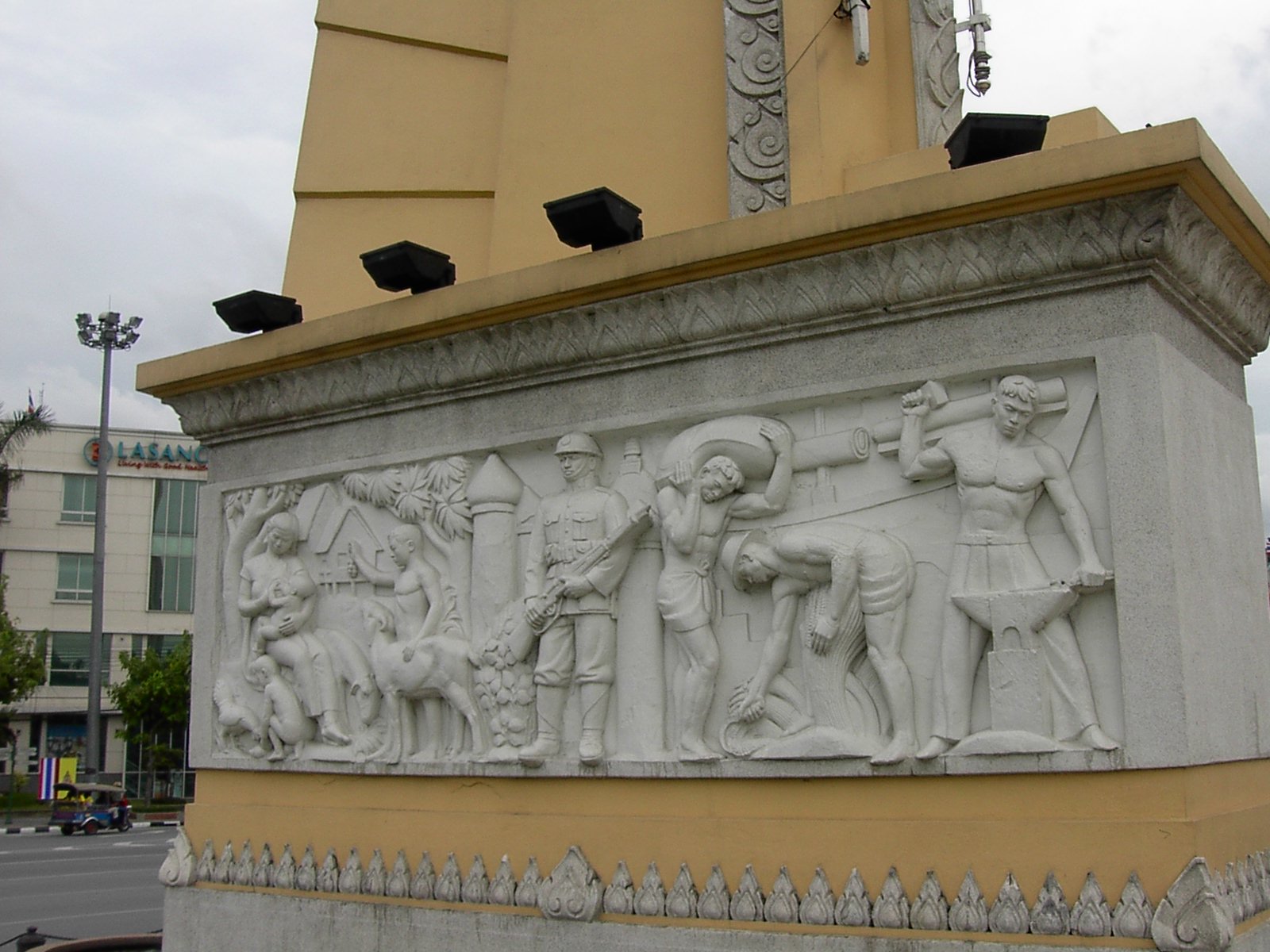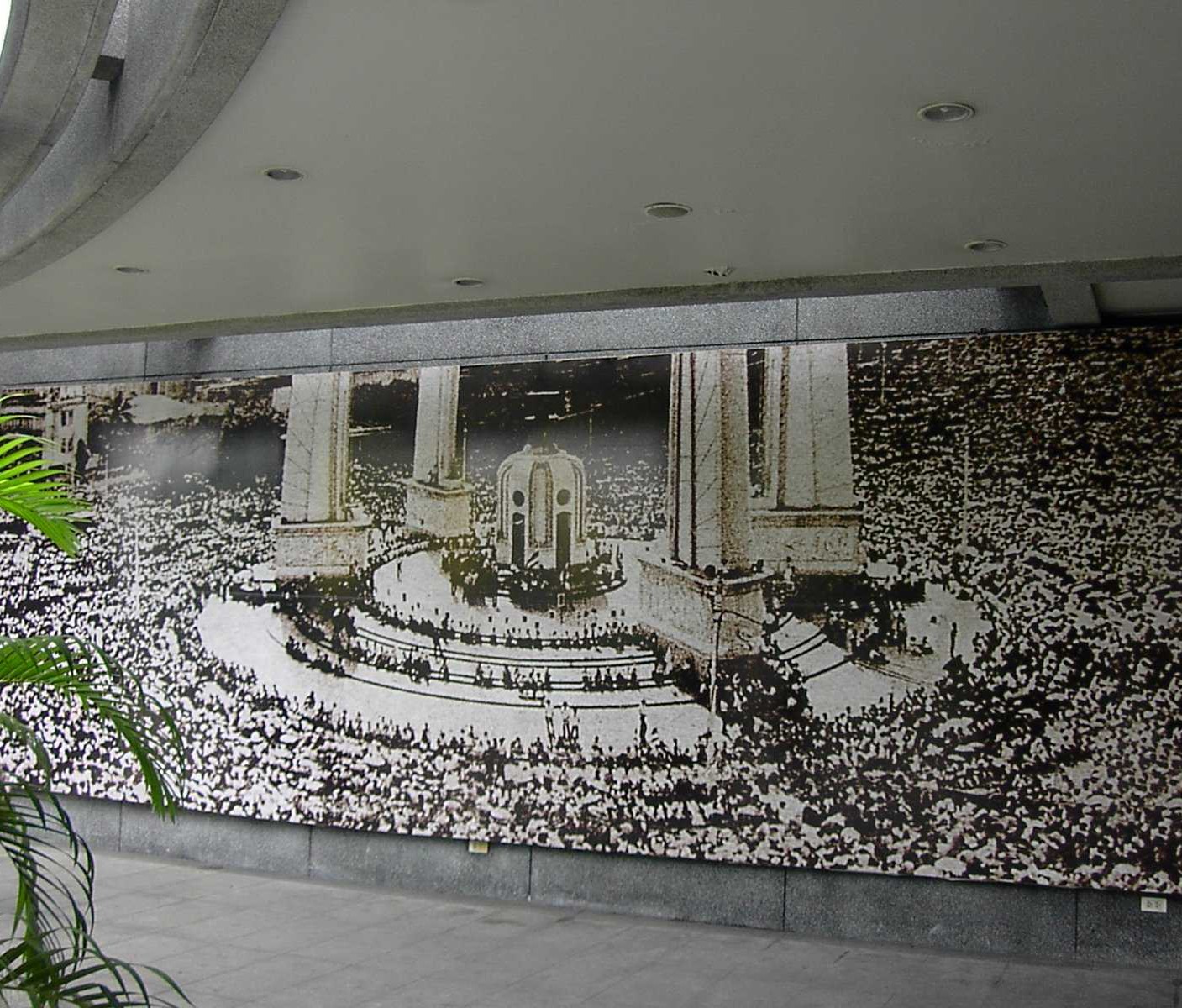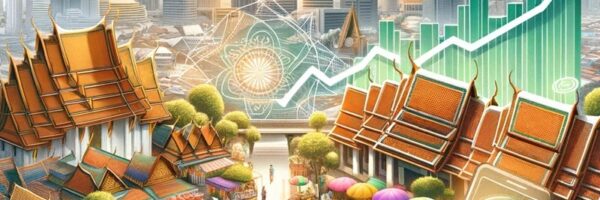
by Leonard le Blanc: History of The Democracy Monument, Bangkok
Bangkok’s Democracy Monument was built in 1939 to commemorate the Siamese Revolution of 1932 which established a constitutional monarchy in the kingdom. The imposing statue is situated in the middle of a traffic roundabout where Ratchadamnoen Avenue meets Dinso Road. The monument is located about halfway between the temple of the Golden Mount (Phu Kao Thong) and Sanam Luang, the former royal cremation ground in front of Wat Phra Kaew.
The kingdom’s military dictator, Field Marshal Plaek Phibunsongkhram, or Phibun as he was known in the West, ordered the monument to be built. In his mind, it was to be the focal point of a redesigned, modernised (or Westernised) Bangkok city landscape, something like the Paris Arc de Triomphe along the Champs-Élysées.
The monument was designed by Chitrasen Aphaiwong, an architect. His brother, Khuang Aphaiwong, was a leading member of Phibun’s government. The supporting relief sculptures around the base of the were designed by the Italian sculptor Corrado Feroci. He would go on to design the figures on the Victory Monument two years later.
The Construction of the Democracy Monument

The construction of the Democracy Monument, along with the widening and complete redesign of Ratchadamnoen Road to make it a ceremonial boulevard, were extremely unpopular events at the time. At that time, the roadway was far narrower than it is now. The street was gracefully lined with hundreds of shading trees. The avenue was also lined with many little shops, mainly Chinese-owned, and small residences. Everyone was given just sixty days to vacate their homes and business or face forced eviction. All the shading trees were soon felled and the grand boulevard was inaugurated but leaving behind a lot of bitterness and hard feelings from the former residents.
The most important feature of the Democracy Monument is a sculpted representation of a palm leaf manuscript box that holds the 1932 Thai Constitution. It is on top of two golden offering bowls above a round turret. The Thai constitution is symbolically guarded by four wing like structures. These four structures represent the four Thai armed forces or military service branches – the Army, Navy, Air Force, and Police. All these organisations help carry out the 1932 coup d’état. The wings are 24 metres high. The radius of the base is 24 metres wide. This figure represents the fact the coup d’état happened on 24th June 1932. The central post is three metres high. This figure represents the month of June, the third month in the traditional Thai calendar.

Originally, there were 75 small cannons placed around the outer ring of the monument. These small cannons represented the year of the coup, B.E. 2475, or 1932 A.D. There were six central post or turret gates.
These represented the People Party, who had successfully carried out the revolution, and their declared governing policies:
- Independence
- Internal peace
- Equality
- Freedom
- Economy
- Education
The Fountains of Democracy Monument
There are two fountains in the form of a somewhat Western stylised Naga, a mythological snake that is scared in Hindu and Buddhist lore. The relief figures represent the armed forces depicted as champions of democracy. The panel was constructed to allegorically represent that the military regime’s view in 1939 was that the Thai armed forces only existed to serve the Thai people.
The Democracy Monument is one of the best known and largest public arts displays in the kingdom. It has been the scene, or connected to, many dramatic political events and demonstrations since it was constructed over 80 years ago.



